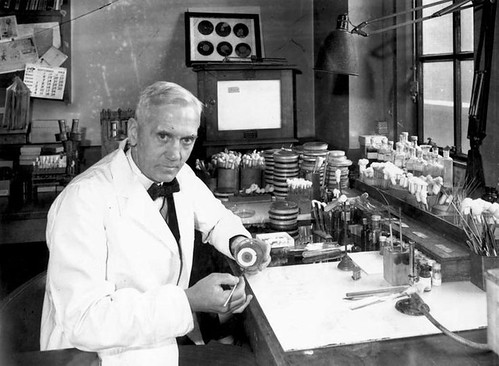Alexander Fleming notices a bacteria-killing mold growing in his laboratory leading to the discovery of penicillin.
Scottish scientist Alexander Fleming makes a curious discovery when he returns to his lab after a vacation. In one of the dirty Petri dishes he had stacked in a tray filled with Lysol—one that had not be submerged in the disinfectant—he notices that mold has grown and that it seems to have killed the staph bacteria Fleming had cultivated in the dish.
That intrigues Fleming because for years, he’d been researching the antibacterial properties of enzymes, such as those found in human tears. He wonders if this mold could lead him to developing the wonder drug he’d been looking for.
Fleming soon determines that the mold likely floated up in spores from the lab in the floor below him, where one of his colleagues has been collecting mold samples as part of asthma research. They identify it as a mold known as Penicillium so Fleming decides to call its bacteria-killing “juice” penicillin.
Fleming, however, was not a chemist and he wasn’t able to isolate whatever was killing the bacteria. He did publish a paper about his discovery in 1929, but it didn’t generate much interest.
Then, a worldwide depression dried up funding for scientific research. It wasn’t until 1938 that an Oxford University scientist named Ernst Chain happened upon Fleming’s paper on penicillin. He began working with his boss, researcher Howard Florey, and they found that it cured bacterial infections in mice. Then they tried it on humans, with similar success.

